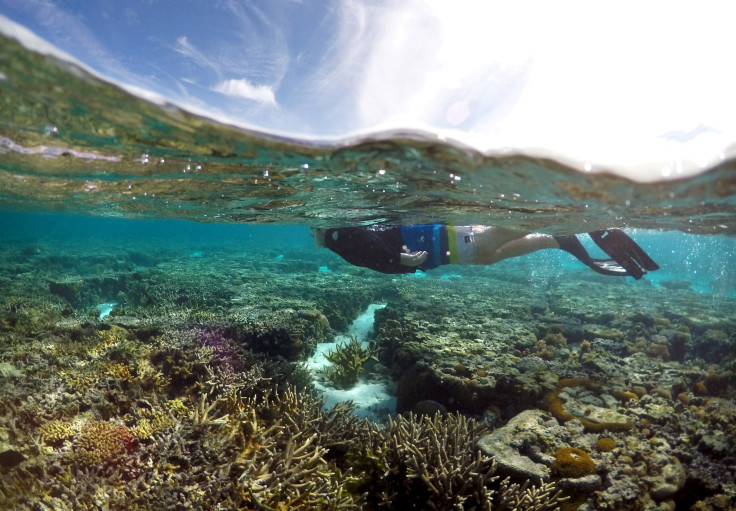The 2016 Great Barrier Reef heatwave caused widespread changes to fish populations

The 2016 marine heatwave that killed vast amounts of coral on the Great Barrier Reef also caused significant changes to fishes and other animals that live on these reefs.
Coral habitats in the Great Barrier Reef (GBR) and in the Coral Sea support more than 1,000 fish species and a multitude of other animals. Our research, published in Nature today, documents the broader impact across the ecosystem of the widespread coral losses during the 2016 mass coral bleaching event.
While a number of fish species were clearly impacted by the loss of corals, we also found that many fish species responded to the increased temperatures, even on reefs where coral cover remained intact. The fish communities in the GBR’s southern regions became more like those in warmer waters to the north, while some species, including parrotfishes, were negatively affected by the extreme sea temperatures at the northern reefs.
The loss of coral robs many fish species of their preferred food and shelter. But the warming that kills coral can also independently cause fish to move elsewhere, so as to stay within their preferred temperature range. Rising temperatures can also have different effects on the success, and therefore abundance, of different fish populations.
One way to tease apart these various effects is to look at changes in neighbouring reefs, and across entire regions that have been affected by bleaching, including reefs that have largely escaped coral loss.
We were able to do just this, with the help of highly trained volunteer divers participating in the Reef Life Survey citizen science program. We systematically surveyed 186 reefs across the entire GBR and western Coral Sea, both before and after the 2016 bleaching event. We counted numbers of corals, fishes, and mobile invertebrates such as sea urchins, lobsters and giant clams.
Sea temperatures and coral losses varied greatly between sites, which allowed us to separate the effects of warming from coral loss. In general, coral losses were much more substantial in areas that were most affected by the prolonged warmer waters in the 2016 heatwave. But these effects were highly patchy, with the amount of live hard coral lost differing significantly from reef to reef.
For instance, occasional large losses occurred in the southern GBR, where the marine heatwave was less extreme than at northern reefs. Similarly, some reefs in the north apparently escaped unscathed, despite the fact that many reefs in this region lost most of their live corals.
Sea temperatures the culprit
Our survey results show that coral loss is just one way in which ocean warming can affect fishes and other animals that depend on coral reefs. Within the first year after the bleaching, the coral loss mostly affected fish species that feed directly on corals, such as the butterflyfishes. But we also documented many other changes that we could not clearly link to local coral loss.
Much more widespread than the impacts of the loss of hard corals was a generalised response by the fish to warm sea temperatures. The 2016 heatwave caused a mass reshuffling of fish communities across the GBR and Coral Sea, in ways that reflect the preferences of different species for particular temperatures.
In particular, most reef-dwelling animals on southern (cooler) reefs responded positively to the heatwave. The number of individuals and species on transect counts generally increased across this region.
By contrast, some reefs in the north exceeded 32℃ during the 2016 heatwave – the typical sea temperature on the Equator, the hottest region inhabited by any of the GBR or Coral Sea species.
Some species responded negatively to these excessive temperatures, and the number of observations across surveys in their northernmost populations declined as a consequence.
Parrotfishes were more affected than other groups on northern reefs, regardless of whether their local reefs suffered significant coral loss. This was presumably because the heatwave pushed sea temperatures beyond the level at which their populations perform best.

Local populations of parrotfishes will probably bounce back after the return of cooler temperatures. But if similar heatwaves become more frequent in the future, they could cause substantial and lasting declines among members of this ecologically important group in the warmest seas.
Parrotfishes are particularly important to the health of coral reef ecosystems, because their grazing helps to control algae that compete with corals for habitat space.
A key message from our study is not to overlook the overarching influence of temperature on coral reef ecosystems – and not to focus solely on the corals themselves.
Even if we can save some corals from climate change, such as with more stress-tolerant breeds of coral, we may not be able to stop the impacts of warming seas on fish.
Future ecological outcomes will depend on a complex mix of factors, including fish species’ temperature preferences, their changing habitats, and their predators and competitors. These impacts will not always necessarily be negative for particular species and locations.
One reason for hope is that positive responses of many fish species in cooler tropical regions may continue to support healthy coral reef ecosystems, albeit in a different form to those we know today.
Rick Stuart-Smith, Research Fellow, University of Tasmania; Christopher Brown, Research Fellow, Australian Rivers Institute, Griffith University; Daniela Ceccarelli, Adjunct Senior Research, ARC Centre of Excellence for Coral Reef Studies, James Cook University, and Graham Edgar, Senior Marine Ecologist, Institute for Marine and Antarctic Studies, University of Tasmania
.original article. Read the The ConversationThis article was originally published on




















